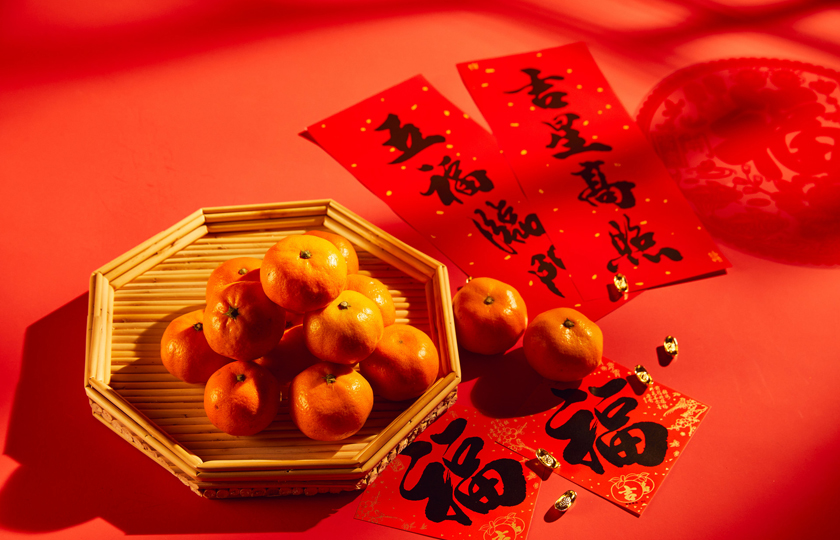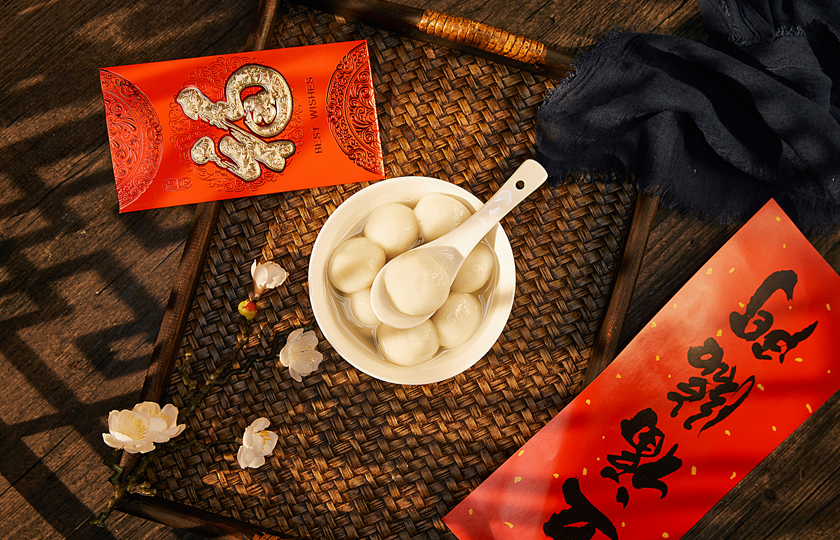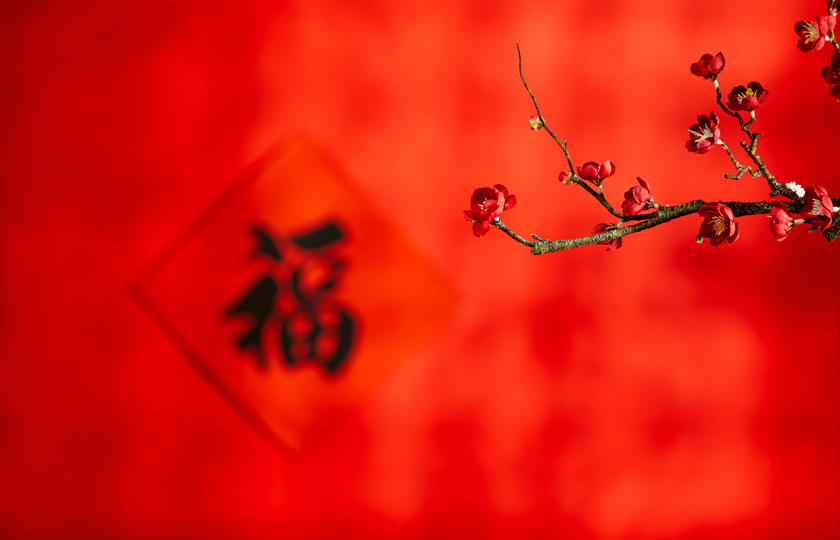Embrace the Joy and Traditions: How to Celebrate Chinese New Year
As a child, the lunar New Year was the holiday I looked forward to the most. Each December, our home would come alive with excitement. My mom busily steamed rice cakes, symbolizing a year of rising prosperity, while the sweet aroma filled the air. My dad wrote couplets in black ink on bright red paper, adding to the festive cheer.
On New Year's Eve, our family gathered for the reunion dinner, with the table overflowing with dishes, each carrying a meaningful blessing. After dinner, we stayed up to celebrate, and the elders handed out red envelopes filled with money, accompanied by laughter and joy. On the first day of the New Year, we donned new clothes and exchanged well-wishes with neighbors. These cherished memories have made the lunar New Year the warmest holiday in myheart.
Embarking on a Traditional Journey: How to Celebrate Lunar New Year
Celebrating Lunar New Year is one of my favorite topics to share because every year, I can feel the vibrant holiday atmosphere and boundless joy. Here are some common ways to celebrate in China:
Reunion Dinner; A Symbol of Togetherness
The reunion dinner is the heart of Lunar New Year celebrations, symbolizing family unity and happiness. We prepare a lavish feast, including dishes like braised pork, fish (which signifies abundance), and dumplings (symbolizing wealth). Each dish carries a special meaning, representing our best wishes for the future.Decorating with Couplets and Paper-Cuttings Spring couplets and paper-cuttings are traditional New Year decorations. The red couplets feature auspicious phrases, while paper-cuttings are crafted into various lucky designs. We enjoy the process of hanging these decorations together, enhancing the festive atmosphere.
Setting Off Firecrackers and Fireworks
Setting off firecrackers and fireworks is a traditional way to celebrate the New Year, symbolizing the drive away of evil spirits and welcoming in the new year. On New Year's Eve, we gather to light firecrackers and watch fireworks burst in the sky, bringing endless joy and hope.
Family Gatherings
During the New Year period, family members come together to share experiences from the past year and discuss plans for the future. We sit around the table enjoying the reunion dinner, chatting about everyday life, and savoring this precious time together.
Red Envelopes
Red envelopes, known as "hongbao," are given by elders to younger generations, symbolizing blessings and protection. Each year during the New Year, I receive red envelopes from my parents and relatives. They are not just gifts; they represent their love and expectations for me.
New Year Visits
During the holiday, we visit relatives and friends to exchange New Year greetings and blessings. These visits are not just about well-wishing; they also play an important role in maintaining relationships.
What Are the Rituals and Traditions of Chinese New Year?
One year during the Spring Festival, I returned to my hometown and experienced the rich atmosphere of Lunar New Year firsthand. Here are some customs and traditions I observed:
Sweeping the Dust Cleaning the house
before the New Year is an important preparation. We thoroughly clean our home to symbolize the removal of the old year's dirt and misfortune, making way for good luck in the new year.
Reunion Dinner
The reunion dinner symbolizes togetherness. We prepare a lavish feast, including dishes like braised pork, fish (which signifies abundance), and dumplings (symbolizing wealth). The whole family gathers to share delicious food, reminiscing about the past year and expressing hopes for the future.
Decorating with Couplets and Paper-Cuttings
Spring couplets and paper-cuttings are traditional New Year decorations. The red couplets feature auspicious phrases, while the paper-cuttings are crafted into various lucky designs. We all pitch in to hang these decorations, adding to the festive atmosphere.
Setting Off Firecrackers and Fireworks
Setting off firecrackers and fireworks is a traditional way to celebrate the New Year, symbolizing the drive away of evil spirits and welcoming the new year. On New Year's Eve, we gather to light firecrackers and watch the fireworks burst in the sky, bringing endless joy and hope.
Staying Up Late
Staying up late on New Year's Eve, known as "shou sui," involves the whole family welcoming the New Year together. We sit around, watch the Spring Festival Gala, chat, and wait for the midnight bell to ring.
Red Envelopes
Red envelopes, or "hongbao," are given by elders to younger family members, symbolizing blessings and protection. Every year, I receive red envelopes from my parents and relatives, representing their love and expectations for me.
New Year Visits
During the New Year, we visit relatives and friends to exchange greetings and blessings. These visits are not only a way to convey well-wishes but also an important way to maintain relationships.
Wearing New Clothes
Wearing new clothes during the New Year symbolizes new beginnings and fresh hopes. New clothing represents not just a physical renewal but also a spiritual refreshment.
Eating Dumplings
In northern China, eating dumplings on New Year's Eve is a significant tradition. Dumplings symbolize wealth and reunion. We enjoy the warm process of making dumplings together, cherishing the family time spent on this activity.
8 Chinese New Year Food Symbols
During Lunar New Year, food is not just a treat for the taste buds; it also carries rich cultural significance and beautiful meanings:
Fish (年年有余)
The word for "fish" (鱼) sounds like the word for "surplus" (余), symbolizing abundance in life with wealth and food to spare. Whether it’s braised fish with rich sauce enveloping tender meat or a simple steamed fish that highlights its natural flavors, fish embodies hopes for a prosperous life.
Dumplings (更岁交子)
Dumplings resemble ingots, representing wealth and prosperity. They are traditionally eaten during the transition from the old year to the new, hence the term "更岁交子" (changing of the years). In some regions, coins or candies are hidden inside dumplings; finding a coin signifies good fortune in the new year, while finding candy means sweet days ahead.
Sticky Rice Cake (年年高)
Made from glutinous rice or millet, sticky rice cakes are soft and chewy. The word for "cake" (糕) sounds like "tall" (高), symbolizing progress and improvement in life year after year. They can be steamed for a pure rice flavor or fried for a crispy exterior and soft interior, with each bite representing hopeful wishes for the new year.
Sweet Rice Balls (汤圆/元宵)
These symbolize reunion and togetherness, as families gather to eat sweet rice balls. Whether filled with black sesame or peanut paste, the melting sweetness in your mouth reflects the deep bonds of family affection.
Four Happiness Meatballs (四喜丸子)
This dish consists of four round meatballs, representing the four blessings of happiness, wealth, longevity, and joy. Typically made with pork, these tender, brightly colored meatballs release a rich aroma with each bite, welcoming a year filled with good fortune.
Pork Trotters (猪蹄)
Often considered a symbol of prosperity, pork trotters are believed to attract wealth. Slowly cooked until the skin is soft and the meat tender, they are rich in collagen and have a delightful texture, reminding us that the new year should be filled with not just wealth, but also a fulfilling life.
Lettuce (生菜)
Lettuce sounds like "to make money" (生财), so eating it during the new year symbolizes financial success. It can be simply tossed in a salad, refreshing and delicious, conveying a straightforward yet sincere wish for prosperity.
Mandarins (橘子)

The word for "mandarin" (橘) sounds like "luck" (吉), making mandarins symbols of good fortune. When visiting friends and relatives, people often bring mandarins as gifts, sharing blessings. Eating mandarins, with their burst of sweet and tangy juice, mirrors the joy that overflows during the new year celebrations.
Chinese New Year Traditions: Do's and Don'ts
As a food blogger interested in traditional culture, I’m excited to share the dos and don’ts of Lunar New Year customs.
Dos
Thorough Cleaning Before the New Year, it's important to do a thorough cleaning, known as "sweeping away dust." This symbolizes getting rid of the bad luck from the previous year and welcoming the good fortune of the new year. It’s like giving your home a fresh start, creating a clean and tidy environment for the celebrations. During this time, we also declutter and remove unused items, adding to the feeling of renewal.
Hanging Spring Couplets and 'Fu' Characters Spring couplets are written on bright red paper and feature auspicious phrases like "A loud firecracker ushers in the new year." The 'Fu' character is often hung upside down on the door, symbolizing "Fortune has arrived." This tradition fills the home with a festive atmosphere; seeing the vibrant couplets and 'Fu' character at the entrance truly signals the arrival of the New Year, lifting everyone’s spirits.
Staying Up on New Year’s Eve On New Year's Eve, families gather to stay up together. Elders share stories from the past while children snack and wait for the midnight bells. Staying up symbolizes bidding farewell to the old year and praying for a safe and prosperous new year. According to tradition, it also signifies adding years to the elders' lives. This shared experience creates a warm and expectant atmosphere unique to the Lunar New Year.
New Year Visits On the first day of the new year, everyone dresses in new clothes and visits family and friends to exchange greetings. When meeting elders, we perform a traditional salute and offer auspicious wishes like, "Happy New Year, Grandma and Grandpa! Wishing you health and longevity." Elders often give red envelopes, known as 'hongbao,' containing money to the younger generation. This practice enhances familial bonds and friendships, making the New Year filled with warmth and joy.
Ancestral Worship During the New Year, many families honor their ancestors. They prepare lavish offerings such as fruits, pastries, and meats, which are placed before the ancestral tablets or images. The family then takes turns lighting incense and bowing in gratitude for their ancestors’ blessings, praying for continued safety in the coming year. This ritual helps everyone remember their roots and pass down family values and traditions.
Don’ts
No Sweeping or Taking Out the Trash on New Year’s Day It’s considered bad luck to sweep or take out the trash on the first day of the New Year because it symbolizes sweeping away wealth and good fortune. Even if there are small bits of trash, they are typically not cleared until the second day. This custom reflects the care people have for the good fortune of the new year.
Avoid Unlucky Words During the Lunar New Year, adults often remind children not to say anything negative. This time is filled with hope and blessings, and everyone aims to use positive language to welcome the new year, avoiding any words that might bring bad luck.
Be Careful Not to Break Things (If It Happens, Say Lucky Words) If something gets accidentally broken, saying “peace year after year” (which sounds like "broken") can help mitigate the bad luck. Breaking things is generally seen as unlucky, but this remedy shows people’s desire for peace and good fortune. As a result, everyone is extra cautious during the celebrations to avoid accidents.
Interesting Facts About Chinese New Year
Did you know that the date of Lunar New Year is not fixed? It’s determined by the lunar calendar and can fall between January 21 and February 20 in the Gregorian calendar. I remember one year thinking that after New Year’s Day, it would be time for Lunar New Year soon, only to find out I had to wait quite a while. That anticipation just made it even more exciting!
Another fun fact is that the tradition of setting off firecrackers originally aimed to scare away a mythical beast called "Nian." According to legend, Nian would emerge during the transition between the old and new year to cause trouble, but it was especially afraid of the color red, bright lights, and loud noises. So, people began using firecrackers to frighten it away. On New Year’s Eve, the sound of firecrackers fills the air, lighting up the night sky—it's such a spectacular sight that I still fondly remember the vibrant atmosphere!

The custom of giving "hongbao" or red envelopes also has an interesting origin. In ancient times, a little demon called "Sui" would touch children’s heads on New Year’s Eve, causing them to fall ill. To protect their child, a couple placed eight coins wrapped in red paper under their child’s pillow. When Sui came, the shine from the coins scared it away. This practice evolved into the giving of red envelopes, symbolizing the blessing of safety and health for children.
The zodiac is another key feature of the New Year celebrations. Every 12 years marks a complete cycle of the zodiac animals. I have a friend who takes his zodiac year very seriously; he wears red underwear and socks to ward off bad luck. During the New Year, elders often discuss everyone’s zodiac signs to predict fortunes for the coming year, creating a lively atmosphere of conversation and excitement.
Additionally, dragon and lion dances are particularly fascinating. The dragon symbolizes the Chinese nation, and when the dragon dance is performed, the long dragon body sways and dances as if a real dragon is soaring through the clouds. Lion dances vary between the North and South—Southern lions are colorful and cute, while Northern lions resemble real lions, exuding strength and majesty. Every time I see a dragon or lion dance performance, the crowd is packed, and cheers fill the air, igniting the festive spirit of the New Year. These little stories about Lunar New Year add a unique flavor to the holiday, much like the delicious dishes enjoyed during the celebrations.
























